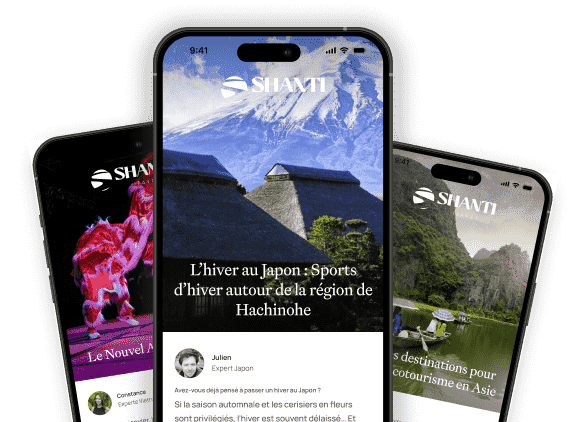If you are deciding when to travel to Indonesia, it is important to keep in mind that the four traditional seasons as we know it do not exist there. Consisting of more than 17,000 islands, the archipelago has a climate that is never identical at any one time. Despite this, the general dry season is between April and October, with the wet season lasting from November to March. In recent years, the rainy season in Indonesia has sometimes started later, such that in 2015 the first rains began arriving in mid-December.
To get a full picture of the best times for your trip, learn more about the best time to travel to Indonesia and consider the unique climate of each major region.
Regional Climate Variations Across Indonesia
Indonesia’s immense size and variety of landscapes means that each region experiences its own weather patterns and climate nuances, which are essential to consider when planning your travels:
- Sumatra & Kalimantan: These islands are characterized by heavy rainfall throughout the year with only slight differences between the so-called wet and dry seasons. For those considering wildlife, jungle trekking, or river expeditions, the drier months of May–September are preferred to avoid the risk of flooding and impassable roads.
- Java & Bali: Both islands see a more pronounced split between dry (May–September) and wet (November–March) seasons. For most cultural, outdoor, and beach-related activities, these dry months are ideal. However, be aware that low-lying and inland areas, especially during the wet months, can become waterlogged.
- Sulawesi: Conditions can differ significantly across Sulawesi, but generally you’ll find the driest weather from May–September—a peak period for diving and exploring remote peninsulas.
- Nusa Tenggara (Lombok, Sumba, Flores): A marked tropical savanna climate means heavy rainfall in the wet season, with a risk of drought during the dry. Plan treks or visits to Komodo and Rinca during the milder dry months.
- Papua: While Papua has consistent rainfall year-round, the far west tends to be wetter than the eastern highlands. Always inquire about access conditions to remote areas or trekking routes before you travel.
Indonesia’s Tropical Climate – What to Expect
Throughout the year—and especially during monsoon periods—Indonesia maintains a typical equatorial climate: hot and humid! Expect an average temperature near 30°C at sea level, with humidity between 70–90%. The seaside offers little variation, but venture into the mountains or volcanoes above 2,000 metres and you may find temperatures dipping below 10°C at dawn. It’s wise to always pack a lightweight rain jacket, regardless of season.
If you travel between late July and the end of August, you’ll experience the “windy season.” A jacket and scarf are useful in hill stations and mountain villages (areas like Ubud, Munduk, Kintamani, Berastagi, Rantepao, Bromo, Ijen, Rinjani, and Kelimutu). This season also heralds Bali’s unique kite-flying tradition—skies come alive with vibrant shapes, creating an enchanting spectacle for travelers.
Expert tip: The phenomenon known as “masuk angin” (literally “entering wind”) is much discussed locally. Indonesians believe that catching a chill leads to fatigue and saps your energy, so even during warm months, locals dress accordingly in the evenings in breezy areas!
Key Influences on the Best Times to Travel
- High and Low Season: July and August are considered peak season, seeing higher accommodation prices and increased crowds, particularly in Bali’s southern resorts such as Kuta and Legian. To enjoy quieter travel, consider May, June, September, and October, when the weather remains sublime but tourist numbers and prices drop.
- Religious Holidays & Cultural Events: Watch out for major holidays like Eid al-Fitr (Lebaran) and Christmas. These times see significant surges in domestic and regional travel within Indonesia, leading to crowded transport, booked-out hotels, and higher fares. Planning around these can help secure the best value and comfort.
- Festivals & Local Events: Various islands host impressive ceremonies and festivals that may impact availability or present opportunities for unique cultural experiences. Check for local festivities in advance; our Shanti Travel specialists can advise if your dates coincide with noteworthy events.
- Volcanic Activity & Haze: Indonesia’s many active volcanoes—like Merapi (Java) and Agung (Bali)—can sometimes disrupt transport or impact air quality. Additionally, haze from forest fires, especially in Sumatra and Kalimantan between August and October, can affect flight schedules and visibility. It’s best to stay informed and flexible when traveling during these periods.
Expert Planning Advice for Every Season
- During the wet season, rainfall often falls in short, heavy bursts—typically at night or in the late afternoon—allowing for bright, sunny spells even on rainy days. Sightseeing and outdoor activities are still possible, with the occasional need for rain gear and flexible timing.
- In the dry season, conditions are excellent for trekking, cycling, diving, and cultural exploration. However, the popularity means you should book accommodations, tours, and inter-island flights well in advance, particularly in July and August.
- For regions prone to seasonal haze, consider packing a mask and checking local updates before outdoor activities.
- The diversity of the climate means lightweight, breathable clothing is essential year-round; if venturing to high altitudes or during the windy season, add a warm layer and a scarf.
Our Travel Experts at Shanti Travel are full of suggestions on when to travel to Indonesia and will help you find the best activities for each region and season, whether it be pampering yourself with a massage on a rainy day or advising the best secluded beaches bathed in sunshine. Trust your travel expert at Shanti Travel to guide you through the marvels of North and Central Bali, hidden gems across Sumatra or Sulawesi, or through the tropical wonders of Indonesia’s endless islands with true insider advice on when to travel to Indonesia.





